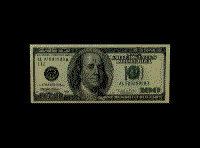
In the 1970's, computerized and electronic
systems were infiltrating all aspects of the securities markets. Automated
systems for reporting bid and ask prices were becoming commonplace and
in 1973, the Depository Trust Company succeeded the Central Certificate
Service as a new, more reliable, computerized system of delivery of shares
between brokers. Along with these new advances, a new electronic market
was rapidly beginning to develop as an important player in the securities
industry. The NASDAQ had finally created solidarity in the over-the-counter
markets and was becoming recognized as an alternative to the New York Stock
Exchange. By the mid-1980's, a combination of superior technology and innovative
procedures would propel the NASDAQ into the third largest stock exchange
in the world.
The NASDAQ made its debut on February 8,
1971. It was touted as an electronic market right from the start, and had
the immediate effect of linking all the OTC firms into one vast market.
Its unique system ran on three levels, and there were many people even
in the NYSE that recognized some of the aspects of this three level system
as superior to those of the specialist system. Each of the three levels
had a distinctive feature, which allowed the NASDAQ to focus on individual
aspects of the market. Level I focused strictly on relaying information,
such as bid and ask prices, while levels II and III focused on the retail
and wholesale markets, respectively. A subscriber to the system could subscribe
to one of the levels, or all three. This type of flexibility is what allowed
the NASDAQ to begin to compete with markets such as the NYSE.
With the emergence
of the NASDAQ, the competitive nature of the US and world securities markets
was drastically altered. Over-the-counter trading was no longer limited
by its lack of cohesiveness and, as a result, companies began to consider
the NASDAQ for the long term, not just for initial offerings of stocks.
Throughout the 1970's, NASDAQ was establishing itself with excellent growth
rates, but it was really in the 80's that the Market established its competitive
position. By the mid-80's, NASDAQ was the second largest and fastest growing
US stock market. It had strengthened its share volume to 75% that of the
NYSE and it was the third largest equity market in the world, behind New
York and Tokyo. In 1979 NASDAQ volume was 3.7 billion shares and 45% of
NYSE volume, but only five years later, it was 15.9 billion shares and
74% of NYSE volume. In addition, in 1983 there were seven days on which
NASDAQ's volume (70-80 million share days) surpassed NYSE volume.
Most of this growth can be attributed not only to new companies and investors being attracted to the NASDAQ, but also to the fact that many companies who had initially listed their stocks with NASDAQ, and then later met the requirements to move on to the NYSE, had decided to stay with the OTC market. The NASDAQ was becoming internationally recognized for its competitive strengths, which included state of the art communications technology, a multimarket maker system and the NASDAQ National Market System, "which provides issuers and investors with a combination of the best features of the OTC and the exchange markets." The multimarket maker system is unique to the NASDAQ and is believed by many people to be superior to the specialist exchange system due to the following advantages. 1) The market makers offer sponsorship by generating interest in a company they have researched and support. Exchange specialists cannot offer this service due to the nature of the specialist system. 2) The competition among the multiple market makers in an OTC stock leads to an appropriate price, based on the company's performance and prevailing market conditions. 3) Competition among market makers also assures investors that there are always dealers who will trade their stocks. 4) Market makers support OTC securities by committing capital, and the combined capital of a number of market makers may well exceed the capital resources of a single exchange specialist.
In addition to the above factors, the NASDAQ is unique and has been successful because it is dedicated to quality and technological advancement. The market was, and still is, electronic and computerized at state of the art levels. The founders invested tens of millions of dollars to get the most sophisticated central computers, market makers and network control available and they produced a nationwide communications system that operates at 99% uptime. The NASDAQ recognized its potential for a strong competitive position and made strides to improve this position by internationalizing its market, increasing its domestic visibility, and perhaps most importantly, striving for technological improvements. These factors were responsible for elevating the NASDAQ to the position it is in today and they will be responsible for its continued success in the future.
1. Amihud, Ho, and Schwartz. Market Making and the Changing
Structure of the Securities Markets, Lexington Books, Massachusetts, 1985.
2. Sobel, Robert. Inside Wall Street, W.W. Norton &
Company, New York, 1977.